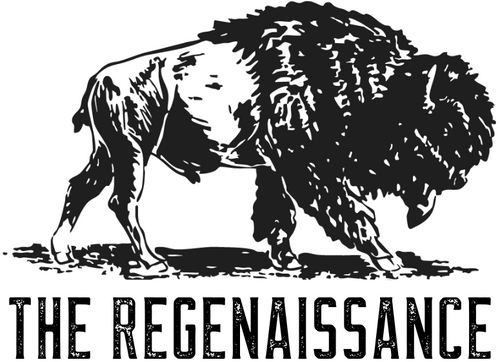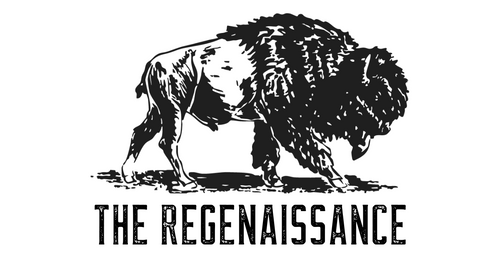Rebels, the revolution is already growing beneath our feet. Across America, farmers are proving that regenerative agriculture (RA) isn’t nostalgic wishful thinking—it’s the future of farming. And unlike Big Ag’s debt-driven treadmill, this future delivers healthier soil and healthier profits.
In this blog, we’ll break down the economic impact and industry trends making regenerative agriculture the most promising path forward for U.S. farmers, rural communities, and food freedom.
What Is Regenerative Agriculture?
Regenerative agriculture is more than “sustainable.” It’s a soil-first philosophy built on practices like cover cropping, no-till, crop diversity, and livestock integration. Instead of depleting the land, regen farmers work with natural systems to rebuild soil organic matter, restore water cycles, and increase resilience to droughts and floods.
For decades, conventional wisdom said: maximize yield at all costs. RA flips the script: maximize long-term profit, resilience, and ecological health.
The Economic Edge: Why Regen Outperforms Conventional Farming
Conventional farming relies on expensive inputs—synthetic fertilizer, pesticides, GMO seed, irrigation—that lock farmers into high costs and thin margins. Regen farmers are proving a different path:
-
A 40-year Rodale Institute trial found organic regenerative systems can be 3–6× more profitable than conventional grain farms.
-
A peer-reviewed study of North Dakota and South Dakota farms showed regenerative corn yielded 29% less grain but delivered 78% higher net profits because farmers cut input costs dramatically.
-
When drought hit, regenerative plots produced 40% higher yields than conventional neighbors, showing resilience translates directly into dollars.
In short: regenerative farming may grow less grain per acre, but it grows more profit per acre.
Jobs and Local Prosperity: How Regen Revives Rural America
Industrial agriculture centralized power in corporations and left rural towns to die. Regenerative farms flip that equation.
Take White Oak Pastures in Bluffton, Georgia:
-
Transitioned 3,000 acres into a diverse, grassfed, multi-species farm.
-
Built on-farm processing plants, bypassing Big Ag’s slaughterhouses.
-
Now employs 165+ people in a county of just 3,000 residents, with a payroll of nearly $100,000 every week.
Instead of sending wealth out to Wall Street, regen farmers keep dollars circulating locally—hiring neighbors, creating new markets, and rebuilding rural main streets.
Adoption Trends: From Fringe to Future
The data is clear: regenerative agriculture is moving from the margins to the mainstream.
-
U.S. farmers planted 18 million acres of cover crops in 2022, up 17% since 2017.
-
No-till is now practiced on 38% of farms nationwide.
-
Market analysts project 14–15% annual growth in the regenerative sector through 2030.
Farmers see it. Corporations see it. Even consumers see it: awareness of RA as a climate and health solution has nearly doubled in the past 18 months.
Policy and Incentives: USDA’s Billions for Regeneration
For once, Washington is noticing. The USDA has invested heavily in regenerative practices:
-
$2.8 billion Climate-Smart Commodities fund to expand markets for regen-grown crops.
-
$19.5 billion in the Inflation Reduction Act earmarked for cover crops, agroforestry, and nutrient management.
NRCS programs helped farmers plant 2.3 million acres of cover crops in 2021 alone.
But not all policy is aligned—crop insurance still penalizes some regenerative practices, like diverse rotations or extended cover cropping. Reform is needed to let regenerative farmers thrive without fear of losing insurance coverage.
Farmers Proving Regenerative Methods Works at Scale
-
Gabe Brown’s Ranch (ND): From near-bankruptcy to thriving, diversified income streams on 5,000 acres. His motto: “Profit per acre, not yield per acre.”
-
Midwestern Corn Belt Farms: Illinois and Iowa farmers slashed fertilizer bills by half with cover crops, achieving 20% higher yields than county averages within 5 years.
-
California Vineyards: Wineries adopting regenerative practices save money on chemicals and command premium prices for regeneratively farmed wines.
Across regions and crops, the story repeats: lower costs, higher resilience, stronger profits.
Corporate and Investor Momentum
When PepsiCo, General Mills, and Nestlé start talking soil, you know the ground is shifting.
-
General Mills committed to 1 million acres of regen by 2030.
-
PepsiCo pledged 10 million acres globally by 2030, investing $216 million in U.S. farmer programs.
-
Nestlé has committed $1.3 billion to regenerative supply chains.
Meanwhile, farmland investors and carbon markets are betting billions on regenerative practices. Wall Street is catching up to what farmers already know: soil is the new gold.
Why It Matters: Food Freedom and Sovereignty
At its core, regenerative agriculture isn’t just about crops or carbon—it’s about sovereignty. It’s about farmers breaking free from debt, communities breaking free from dependency, and consumers breaking free from corporate food chains.
When farmers regenerate their soil, they regenerate their independence.
Rebels, every purchase you make is a vote for the food system you want. Support regenerative farmers. Share their stories. Wear your values.
👉 Join The Regenaissance Newsletter to stay ahead of every soil-first revolution.
👉 Shop Regenaissance Gear – apparel that funds farmer storytelling.





